Community memories revived by residents
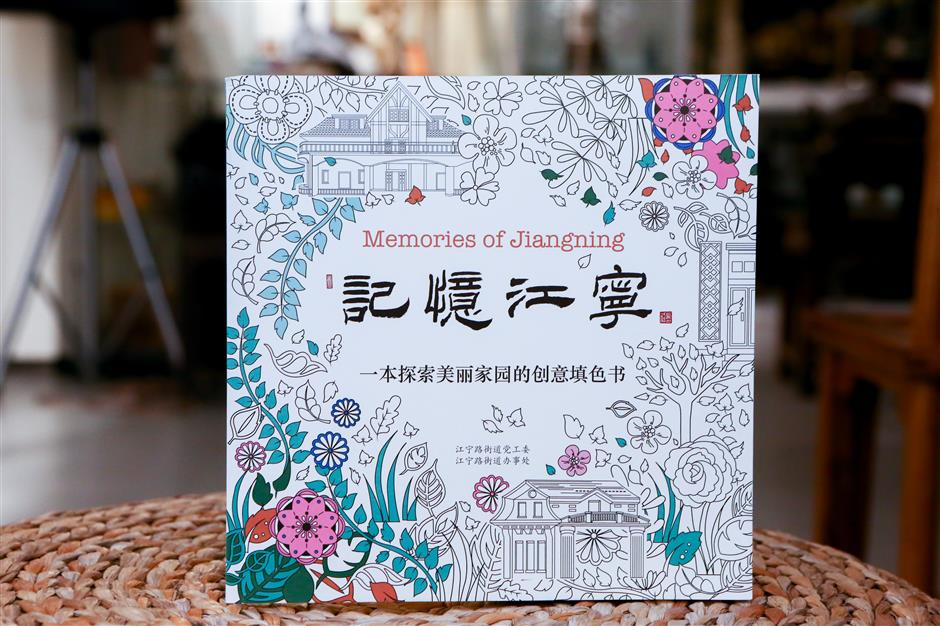
The coloring book of illustrations of missing or present landmarks of Jiangning Community.
Symbols of the past, from historical edifices to old factories, are being lost to the relentless pace of urban renovation — but one community has an indigenous solution to retain its memories.
Downtown Jiangning Road Community, Jing’an District, has an indigenous solution — a coloring book displaying 37 paintings of 24 missing or surviving iconic spots.
It was unveiled on Friday, the day when the annual community art and cultural festival was launched.
The paintings were selected from 108 pieces, all collected from residents, aged from 11 to 83, who picked and drew the sites that had treasured memories or legendary stories.
They included a factory-turned creative park, a former residence of a celebrity and a beautiful western-style building.
“Buildings and blocks interpret the city and warm it,” said the community’s Party secretary Zhang Jun.
The first batch of 6,000 copies have been distributed to residents. More will be printed if needed, Zhang said.

Illustration of Pacific Garden by resident Qian Genquan
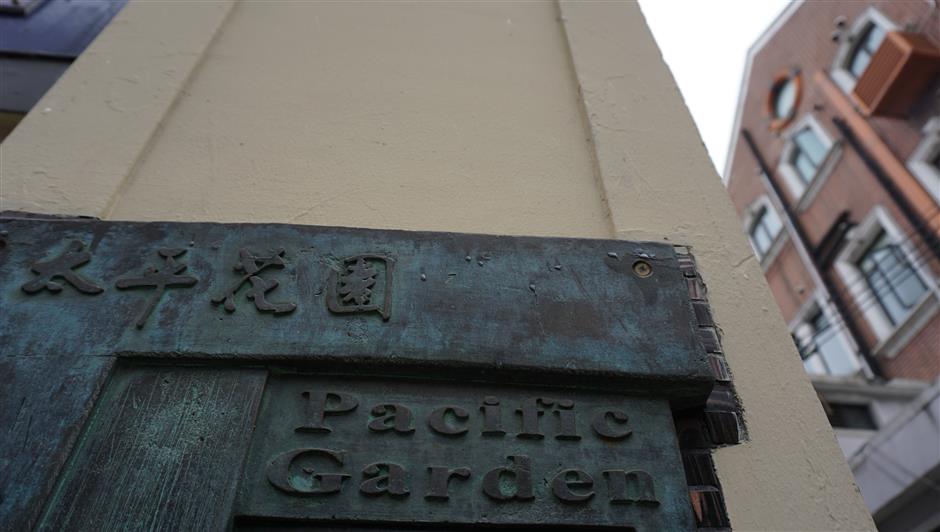
Pacific Garden
The community is located where the International Settlement once stood.
The area is dotted with western-style buildings like Pacific Garden, 470 Shaanxi Road N. It comprises red-brick townhouses built in the early 1920s, featuring the elegance of Queen Anne-style architecture and refined manual wooden engravings.
The developer Wu Tingfang (1842-1922), then China's foreign minister, had used these houses to shelter Jewish refugees during the Nazi Germany persecution years free of charge.
“It’s a popular destination among foreigners, but many locals, even those who have lived for 50 to 60 years, don’t know the history,” said Hong Liangmin, director of Beijing neighborhood residents’ committee. “Now, we have recalled that piece of history.”
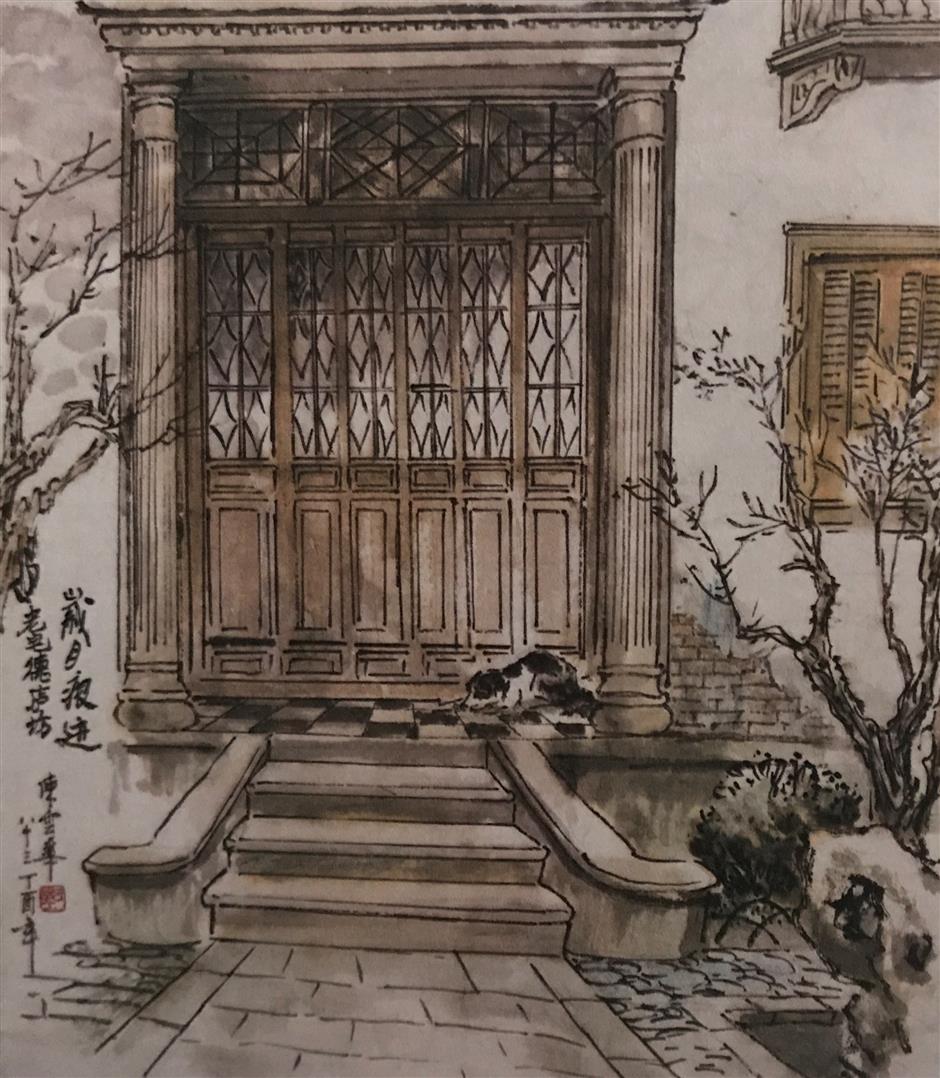
Illustration of Delufang by the oldest painter Chen Yunhua aged 83
The community also features lane-style houses, called by locals as lilong, typical Shanghai architecture that can be characterized as east meets west.
Delufang, 363 Jiangning Road, built in 1912, is one example. The two-floor brick-wood structure features a traditional Chinese garden, with a delicate bridge and rocks carefully placed. It also has Roman pillars on the gate and is equipped with western kitchenware and bathroom.
The area's industrial footprints are also evident as the community has part of its domain along Suzhou Creek, the cradle of finance and commerce in Shanghai in the 1920s and 1930s. But today, most of the industrial buildings have been pulled down.
They include Shanghai No.4 cotton mill, whose history predates the 20th century. It was closed in 1997 and now a residential complex stands there.
Huang Jianhua, a retired worker, drew the factory based on his memory.

Illustration of former Shanghai No.4 cotton mill by retired worker Huang Jianhua
“I drew the gate and part of the factory building of the 1970s. As I lost the photos when I moved, I had to recall how it looked 40 years ago,” he said. “The highlight is the chimney, a must for a factory, and two magnolia trees near the gate. They were planted about 100 years ago, and they are still there.”
While Huang dipped the brush in an inkpot of nostalgic tones to savor the past, Cheng Zhiyuan, a student from Jing’an Experimental Primary School, took a bold step into the modern world — by using simple lines and contrasting colors to portray how 21st century industry has used the past to recreate the future.
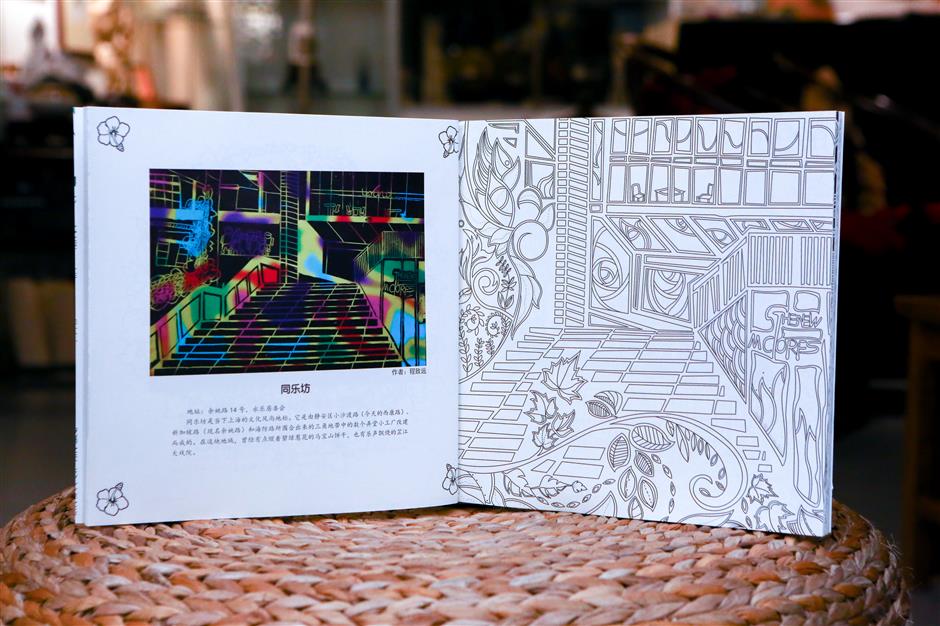
Cheng Zhiyuan, 11, uses bright and contrasting colors to portray the rebirth of a former cluster of old factories.
Located at 14 Yuyao Road, Chen tells the story of a cluster of small-scale factories from about 60 years ago. A decade ago they were renovated into a creative park. Now, they function as a public activity venue for residents, where the annual art and cultural festival takes place.
Zhu Yuxiang, 38, born and bred in the community, loves the idea of renewal. As a big fan of old buildings, he thinks converting them to adapt to the present popularizes local history and culture on the doorstep.
During the festival, he displayed pieces from his collection of items from the past, all related to the community. A police baton is his pride.
“It cost me a lot. I found it in an online store. It belonged to No.26 police officer of the former Gordon Road Police Station,” he said.
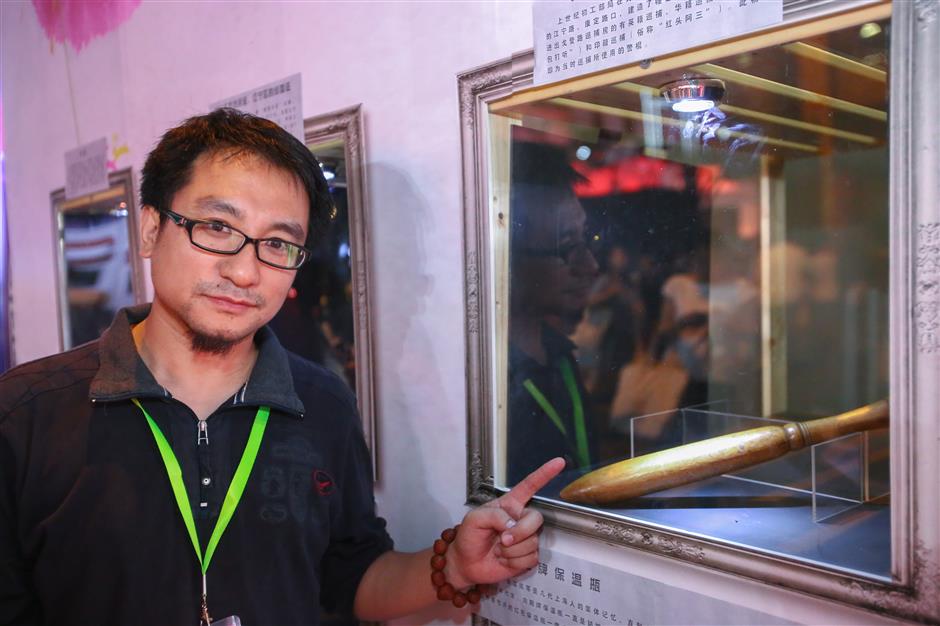
Zhu Yuxiang shows a police baton from about 100 years ago. He bought for his collection of memorabilia.
Gordon Road was the former name of Jiangning Road. In November 1909, a red-brick police station was built at 511 Gordon Road. At that time, Shanghai police liked to recruit Indians as police officers. As many of those officers were Sikhs, a gurdwara — a Sikh place of worship — was built nearby.
“I believed the owner was an Indian. I’m now trying to review the archives and documents to identify him,” Zhu said.
Another highlight is a marriage certificate for a couple who registered in 1954. At that time the community was administered by Jiangning District. It merged to Jing’an in 1960.
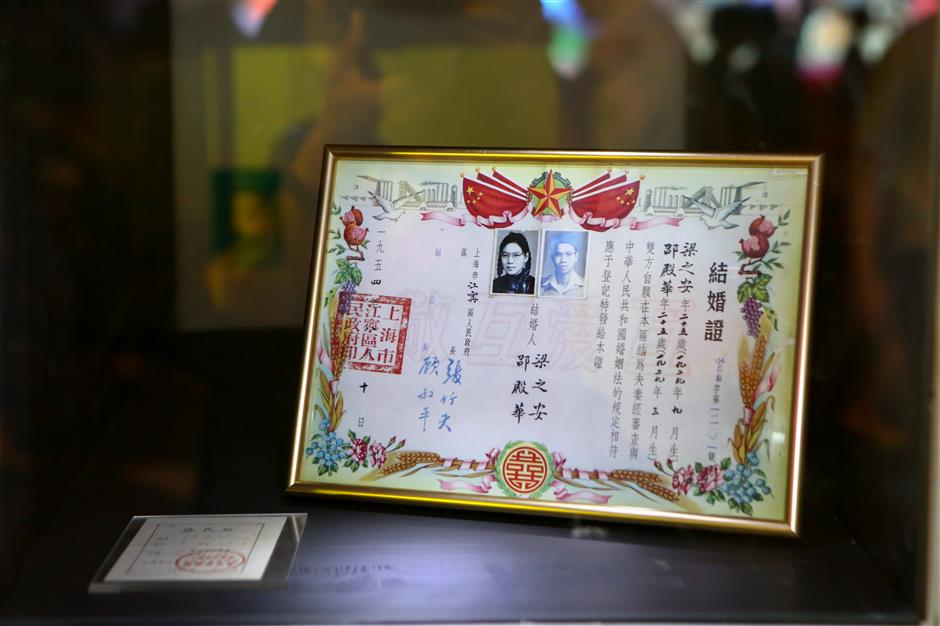
An old marriage certificate and evidence of the history that once there was the Jiangning District.
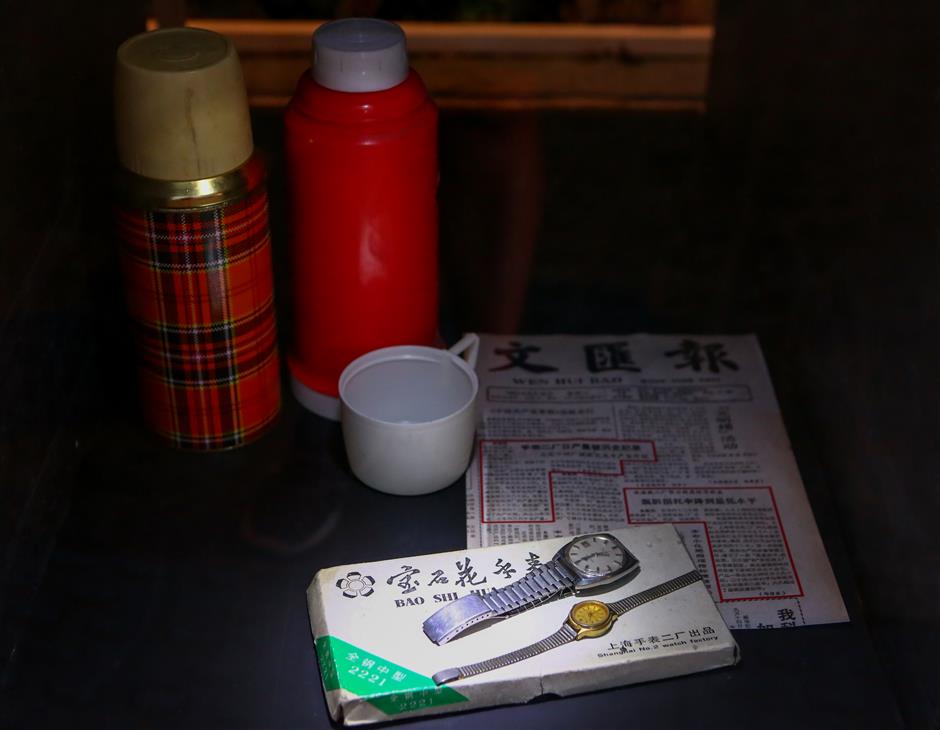
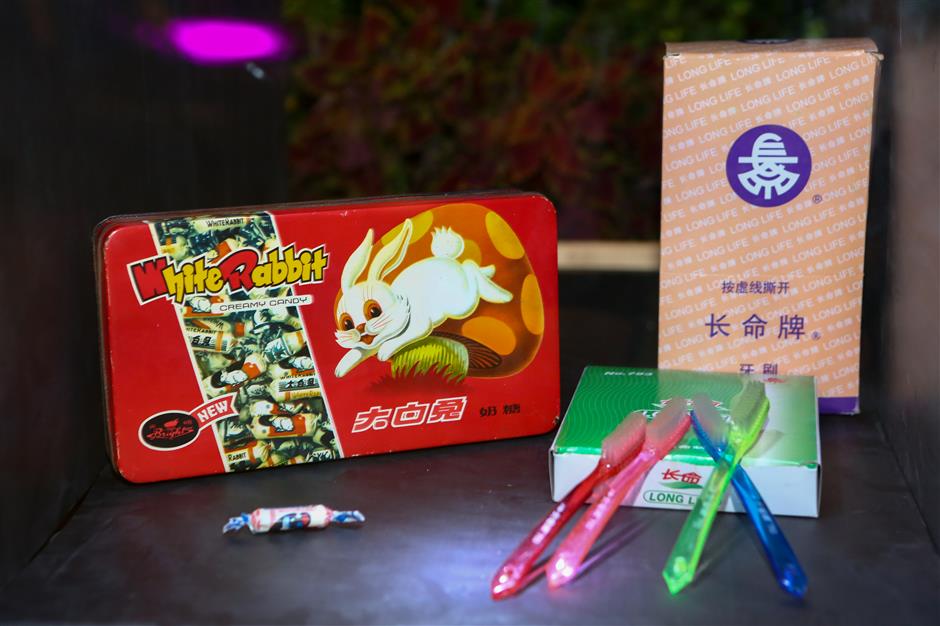
Other exhibited items include a Baoshihua watch, Sunflower thermos and Long Life toothbrushes, made by factories based in the community.
“They were very popular in the 1970s and 1980s. At that time, young men liked to wear Baoshihua watch around the sleeve. And Sunflower thermos were a must part of the dowry,” Zhu said.















